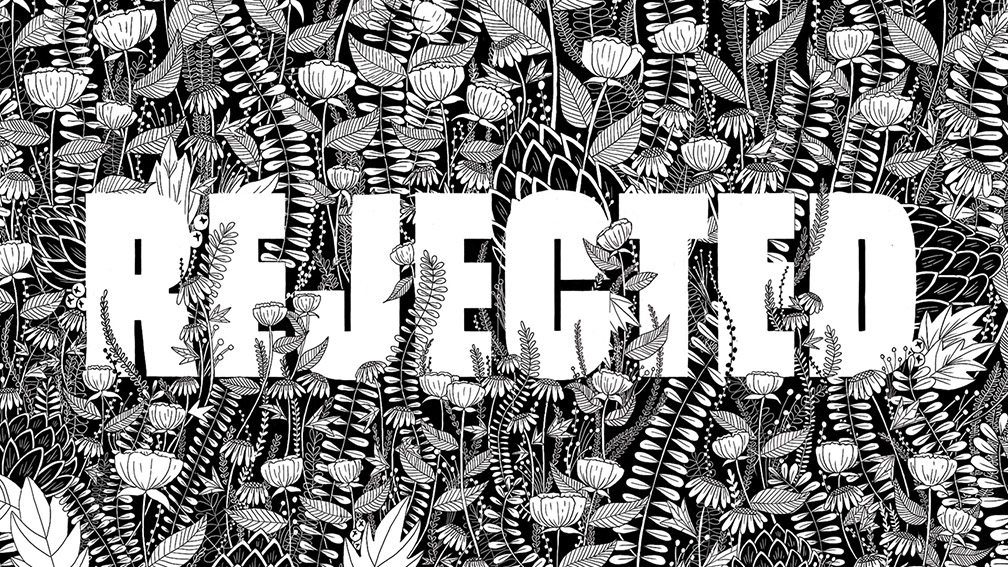The Brand Agency’s Senior Design Lead, Katie Pelosi on the art of mastering rejection

By Katie Pelosi, Senior Design Lead at The Brand Agency.
With the end-of-year graduate exhibitions done and dusted, and a set of new and enthusiastic young faces looking to break into the industry, it makes me reflect on my beginnings as a designer. I look back now with a sense of nostalgia about when I graduated, and if I could teach my younger self just one key lesson, it would be this: learn to embrace rejection.
I began my career at a medium-sized advertising agency in Adelaide, making simple client alterations and sending press ads via Quickcut (shout out to anyone who knows what that is!) before moving into a publication house and eventually into a reputable design studio.
When my first ‘real’ branding job came up, I was beyond excited and enthusiastic. I poured my heart and soul into my concept and dreamt of it being selected by the client. And how it would fulfil my career! The only trouble was that it was really, really bad. So bad, in fact, that I don’t believe it was even presented to the client – cue feelings of disappointment and lack of self-worth.
Each time an opportunity arose, I created work that was slightly better than the last. And with each rejection, I was able to hone my skills as a designer. David Holston, the author of The Strategic Designer (2011), noted that “for many designers, their work is more than a job; it is a reflection of who they are,” which makes rejection that little more challenging to digest. It was hard to see past my failures at the time, but hindsight allows you to view things differently. In my case, these rejections were invaluable learning experiences.
One of the perks of working in a studio environment was working directly with clients. Yes, that meant making the tiniest amendments over the phone (imagine pre-AirPod days with a handset wedged between your ear and shoulder). More importantly, I was given the opportunity to build and maintain client relationships. These everyday interactions built mutual respect and trust and helped me see things from the client’s perspective. As a result, I began to forge collaborative relationships with my clients, and it was at this point in my career I started to take rejection a little more lightly.
By the time I started freelancing, I knew that forming solid relationships with clients was instrumental in creating powerful designs. The client and designer need to work together to achieve the most successful outcome for each project, which you can only accomplish through a respectful and collaborative relationship.
With collaboration in mind, I realised that rejection is not rejection if it is collaborative. Collaboration is teamwork. It’s the collective refinement of an idea, the culmination of many minds working towards a common goal. So, if feedback is collaborative, there is no real rejection, only the potential to grow and progress. It was an idea that freed me from so much self-doubt and liberated my creativity. Without the fear of rejection looming and with a teamwork-based approach in place, I was able to unlock a mindset that allowed me to grow as a designer. It seems like such a simple thing, but it took me a long time to grasp it fully.
This isn’t to say that all rejection is good. Rejection without reason, direction and constructive criticism can lead to a dead end or impotent design outcomes. But, if you can ensure that your relationship with the client is founded on trust and respect, you can pave the way for good collaboration and ultimately achieve great design solutions together.
Today, as a designer with over 15 years of experience, I’ve learned to embrace rejection. It’s no longer a missed opportunity or reflection of my skills as a designer but a chance to reframe, rethink, rework or retarget to discover something different. It is a challenge to do things better, whether that is better designs or better client relationships. But, if you can use rejection as a springboard to something greater, you have taken something commonly viewed as a failure and transformed it into a high-performing super-power. That is the art of mastering rejection.
Holston D, 2011, The Strategic Designer – tools and techniques for managing the design process, How Books, Ohio.

4 Comments
amazing!!!
Beautifully written Katie!
Thanks for sharing. Appreciate your authenticity.
Well said, Katie!